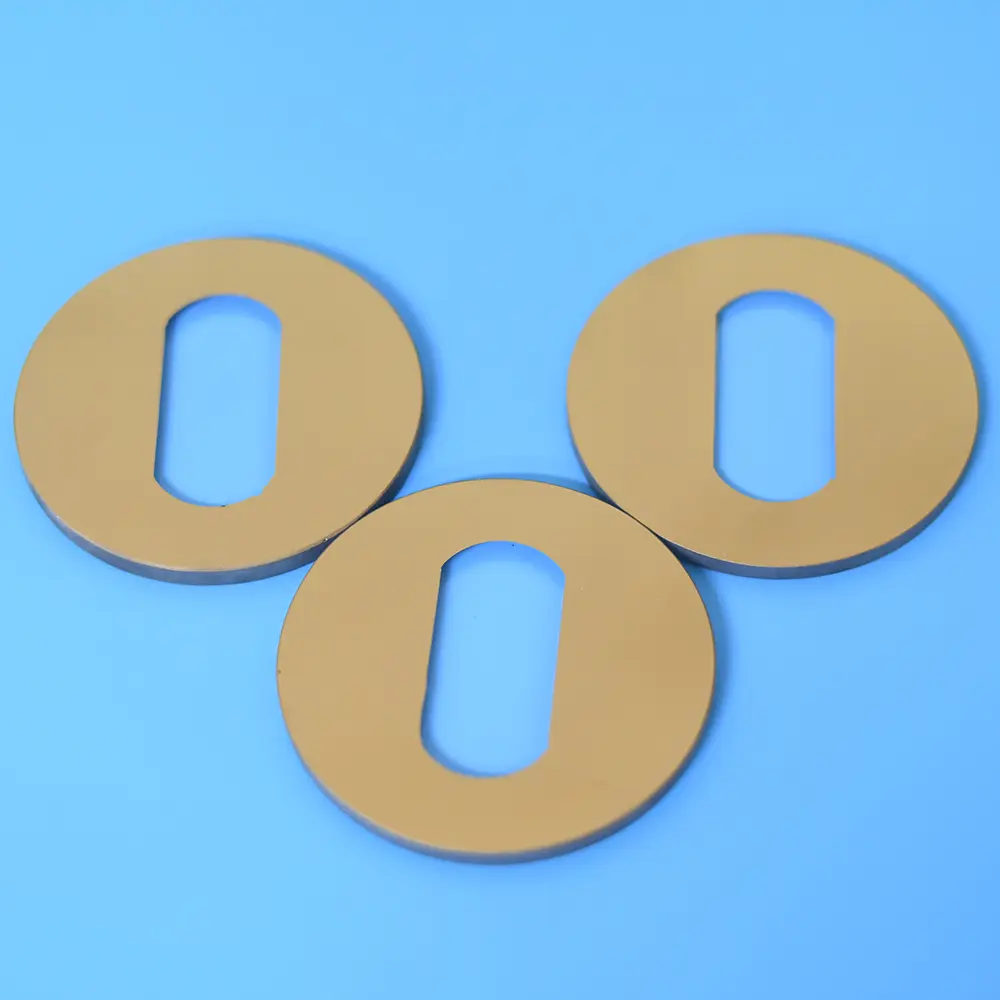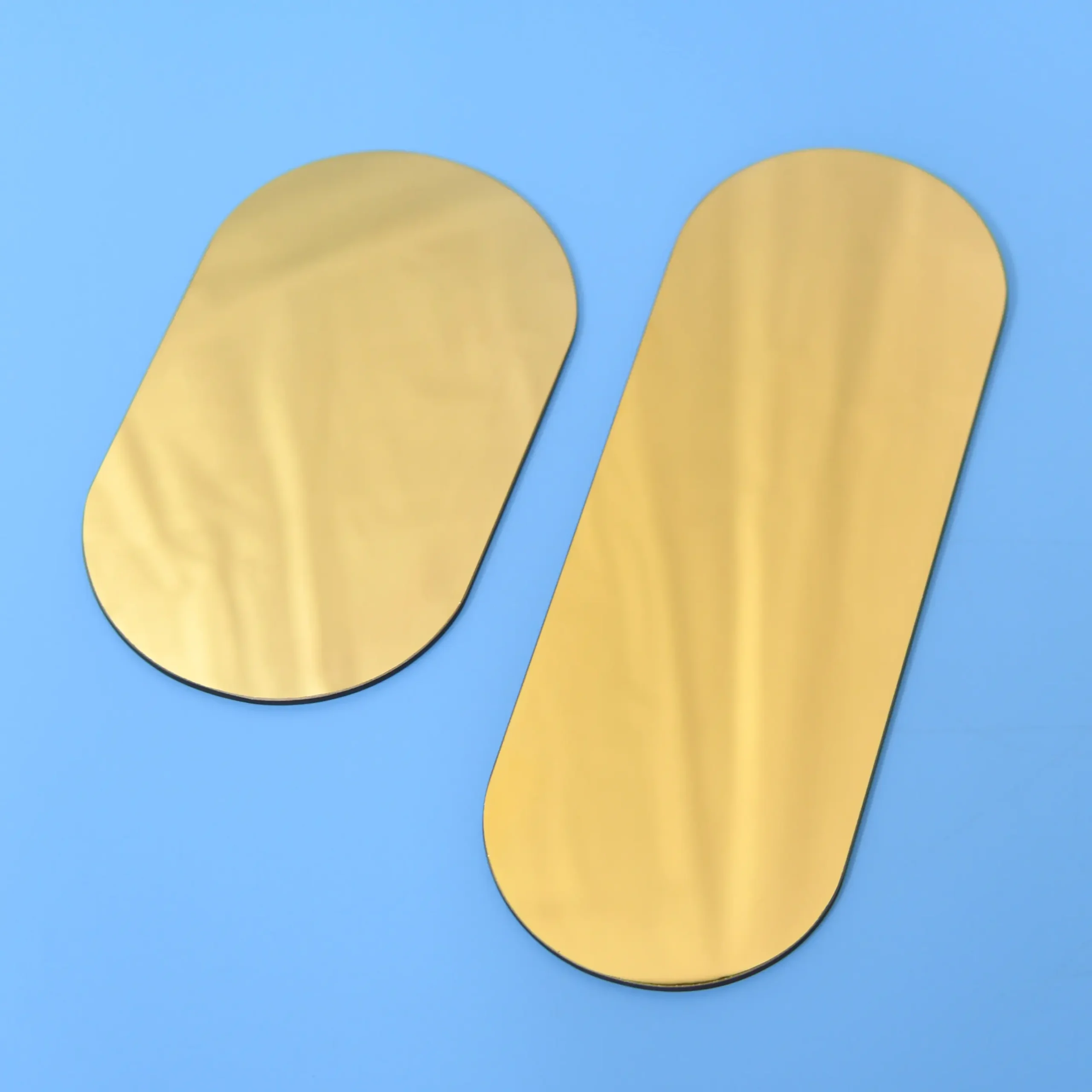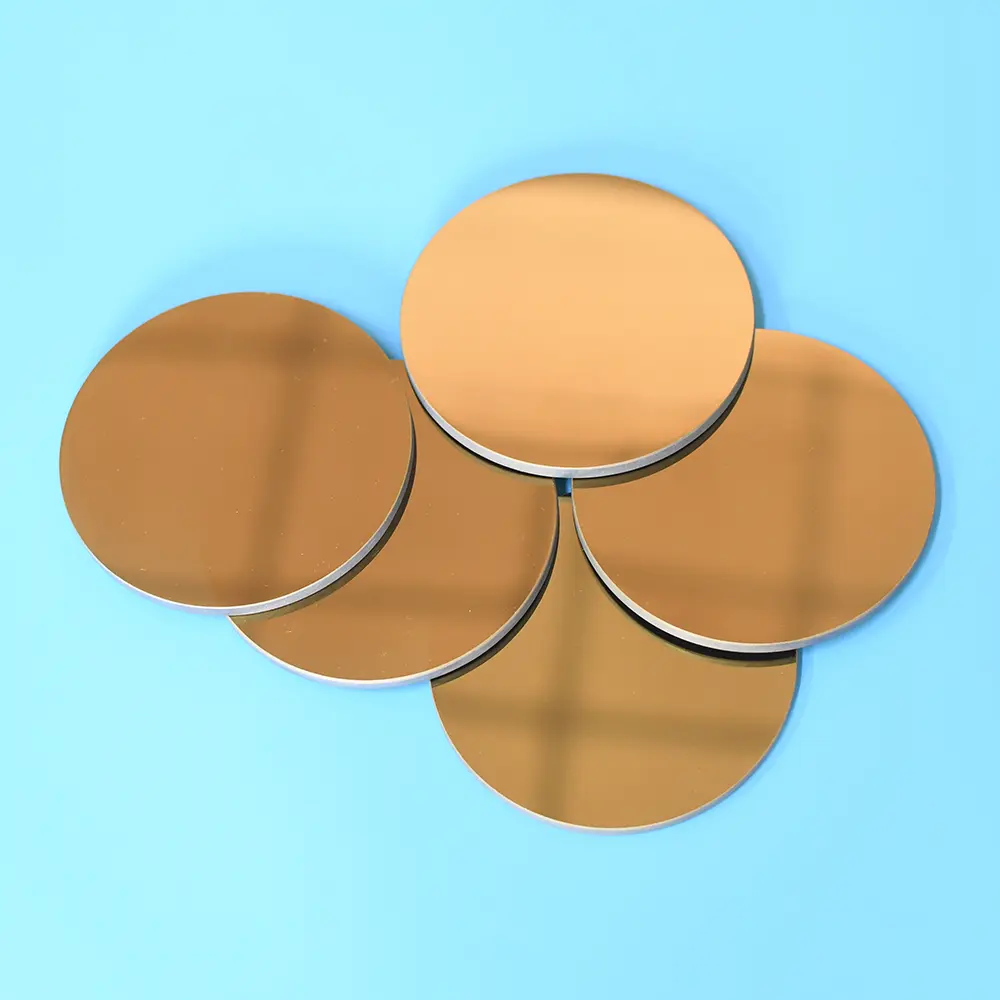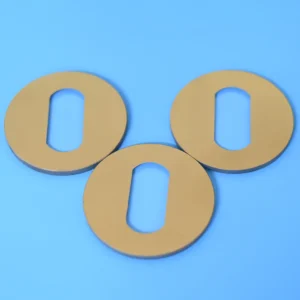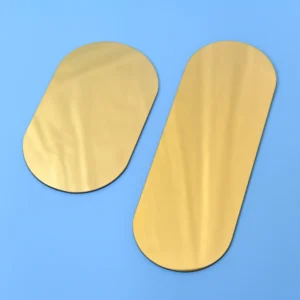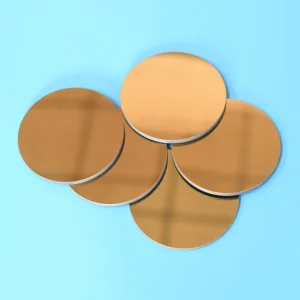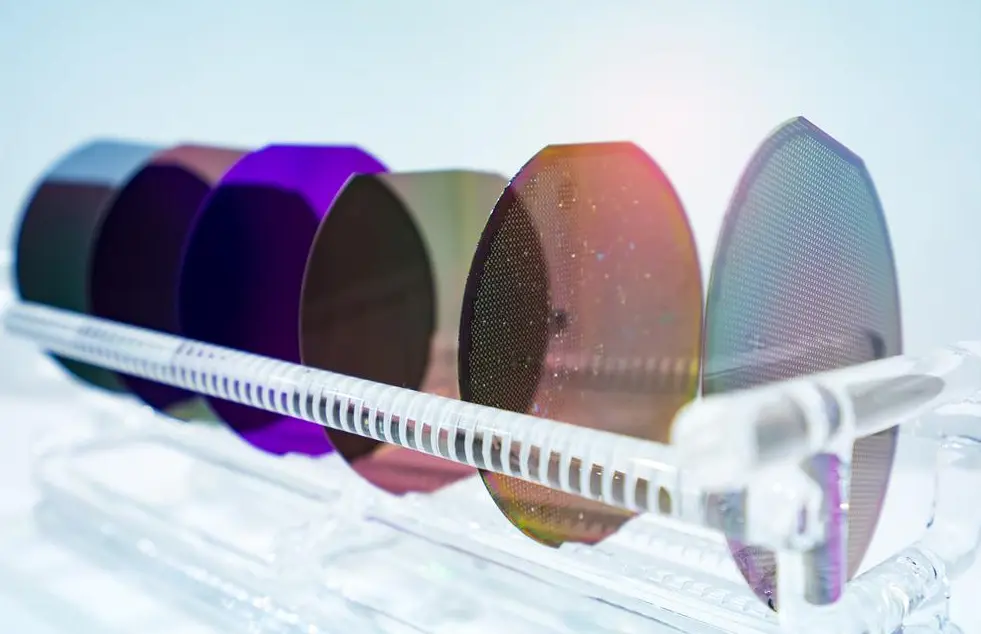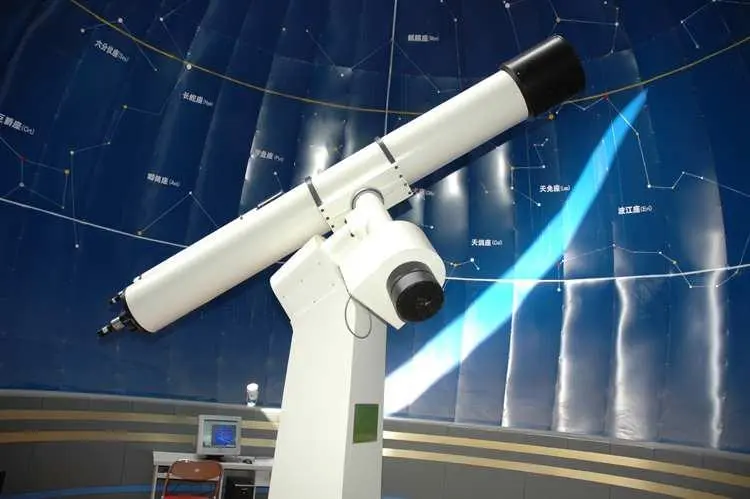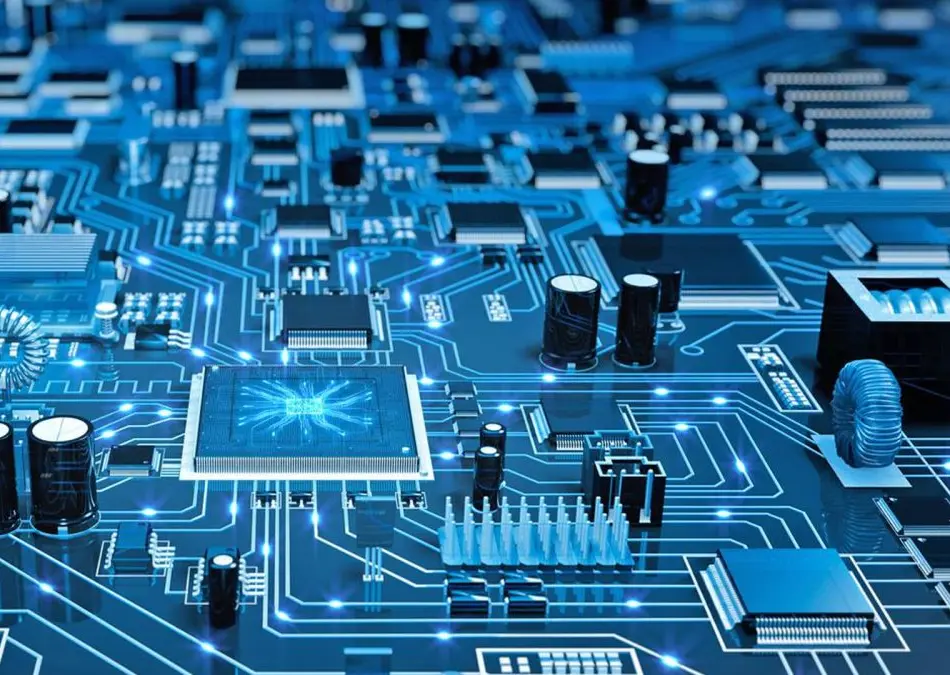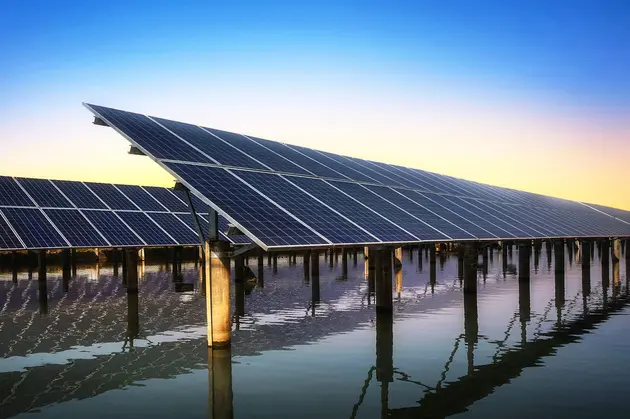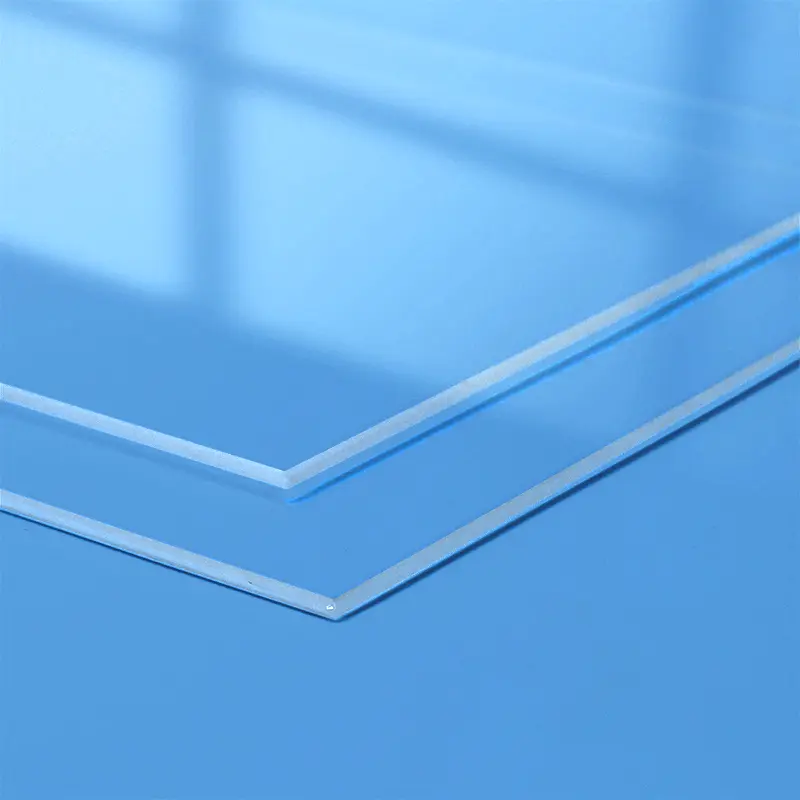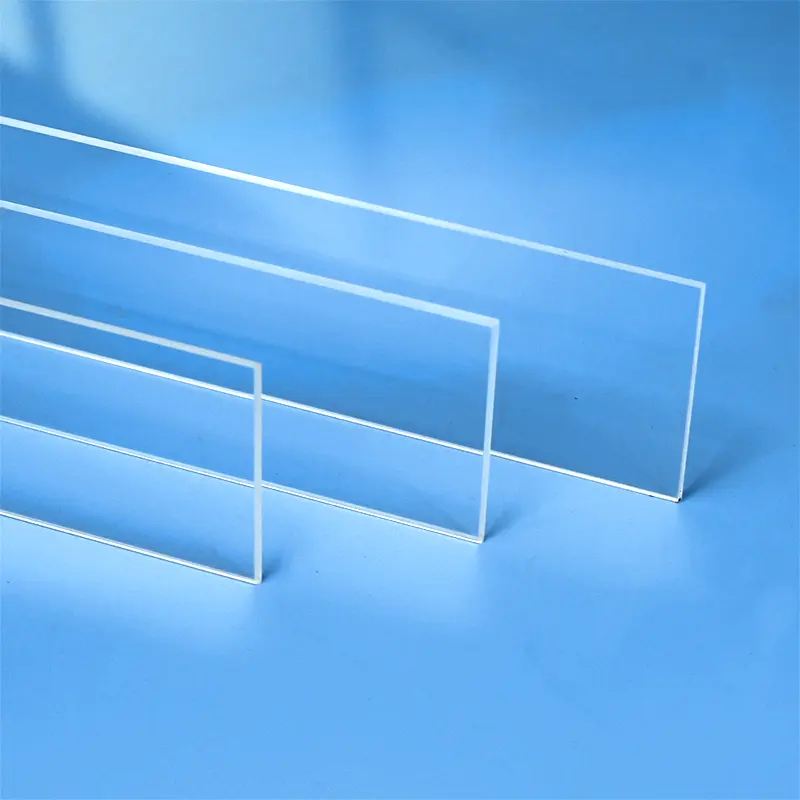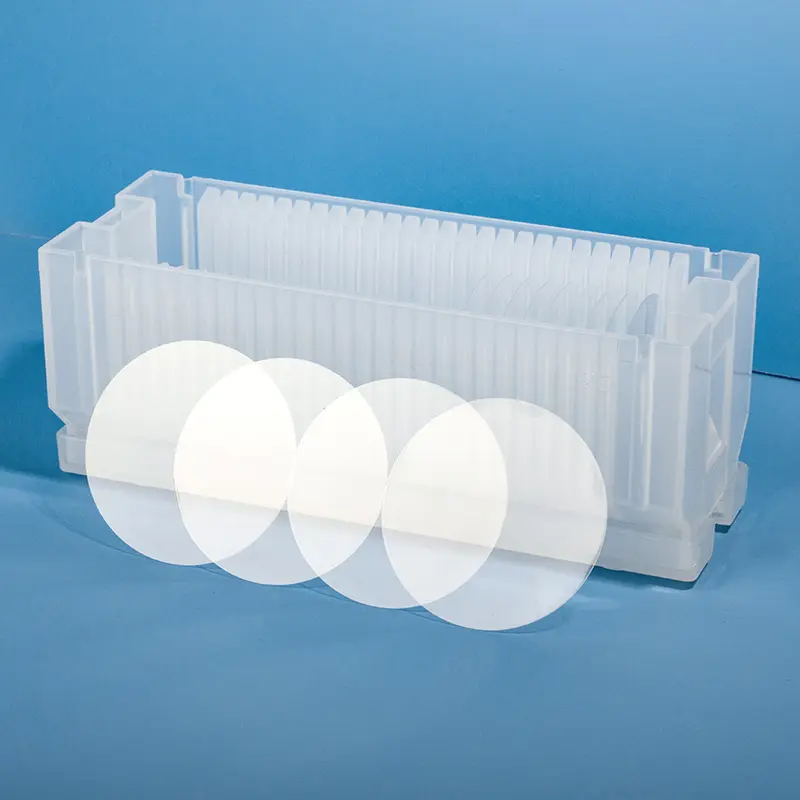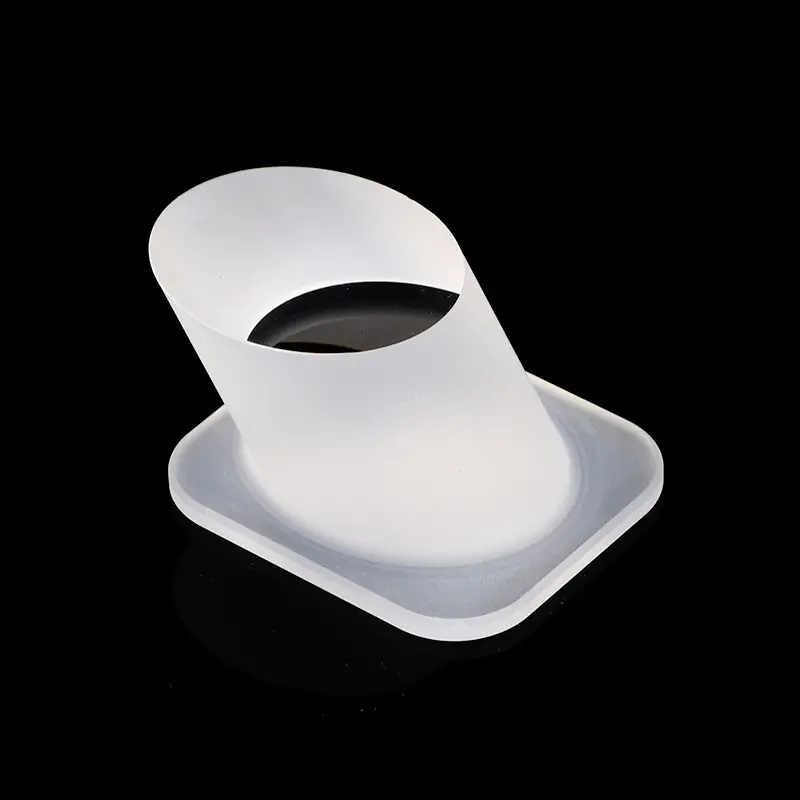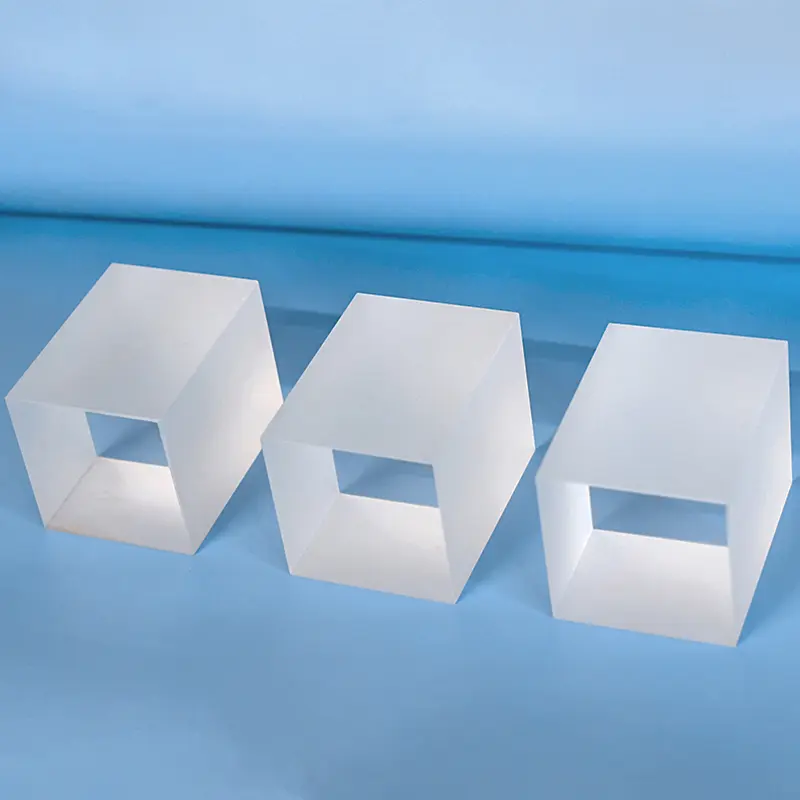A quartz custom gold-coated plate is a high-performance material made from quartz glass that has undergone precision machining and been coated with a layer of gold. It features properties such as high transparency, high heat resistance, a low thermal expansion coefficient, and excellent chemical stability, while the gold layer enhances its optical performance and electrical conductivity. This material is widely used in optical instruments, semiconductor manufacturing, optical fiber communication, and scientific research equipment as optical windows, mirrors, or other critical components, demonstrating its importance in high-tech applications.
| Contenido de la propiedad | Valores inmobiliarios |
|---|---|
| SiO2 | 99.99% |
| Densidad | 2,2×10³ kg/cm³ |
| Dureza | 5,5 - 6,5 Escala de Mohs 570 KHN 100 |
| Resistencia a la tracción | 4,8×10⁷ Pa (N/mm2) (7000 psi) |
| Resistencia a la compresión | >1,1×10⁹ Pa (160.000 psi) |
| Coeficiente de dilatación térmica | 5,5×10-⁷ cm/cm-°C (20°C-320°C) |
| Conductividad térmica | 1,4 W/m-°C |
| Calor específico | 670 J/kg-°C |
| Punto de ablandamiento | 1730°C (3146°F) |
| Punto de recocido | 1210°C (2210°F) |
| Punto de deformación | 1120°C (2048°F) |
| Temperatura de trabajo | 1200°C (2192°F) |
| Resistividad eléctrica | 7×10⁷ ohm cm (350°C) |
| Talla | Personalizado |
| Logotipo | Logotipo personalizado Aceptar |
High Transparency
Quartz glass itself possesses extremely high transparency, and the gold coating process does not affect its optical transmission, ensuring clarity in optical applications.
Resistencia a altas temperaturas
The quartz material can withstand continuous use temperatures of up to 1100°C, making it suitable for high-temperature environments.
Gold Coating Enhancement
The gold layer coating enhances the reflectivity of the quartz glass, particularly in the infrared and visible light ranges, while also providing good electrical conductivity.
Shape Versatility
Quartz custom gold-coated plates can be fabricated into various shapes to meet specific application requirements, such as circular, square, or other complex shapes.
Escenario de aplicación
Semiconductor Manufacturing
In semiconductor processes, quartz custom gold-coated plates are used as various components, such as furnace tubes and glass boats, which require direct or indirect contact with silicon wafers in high-temperature environments. The high-temperature resistance and thermal stability of quartz materials are essential in these applications.
Optical Lens Manufacturing
In the optical field, quartz custom gold-coated plates are used to reduce reflection and enhance light transmission by coating a layer of quartz film onto the glass surface, thereby improving the performance of optical equipment. This is widely utilized in the manufacturing of optical instruments such as camera lenses, telescopes, and microscopes.
The gold coating on quartz custom gold-coated plates primarily serves two purposes: first, to enhance their optical performance within specific wavelength ranges, such as reflectivity and transmission; and second, to provide good electrical conductivity, which is crucial in electronic and optoelectronic applications.
In semiconductor manufacturing, quartz custom gold-coated plates can be used to fabricate components such as furnace tubes and glass boats, which require direct or indirect contact with silicon wafers in high-temperature environments. The high-temperature resistance and thermal stability of quartz are critical for these applications.
The custom shape of quartz custom gold-coated plates allows them to be adapted to various industrial and scientific applications. For example, specific shapes can be used in the design of particular optical instruments, semiconductor manufacturing equipment, or solar panels to ensure optimal performance and compatibility.
Preguntas más frecuentes
El vidrio de cuarzo es un material duro y quebradizo con excelentes propiedades físicas y químicas, dureza mecánica extremadamente alta, buen aislamiento eléctrico, resistencia a altas temperaturas y a la corrosión, rendimiento de retardo bajo y estable, buena transmitancia luminosa, etc. Se utiliza ampliamente en semiconductores, óptica, electricidad, química, aeroespacial, automoción y otros campos. Los materiales duros y quebradizos son difíciles de procesar, y muchos campos necesitan urgentemente procesos de corte con un pequeño colapso del borde, menos pérdida de material, baja rugosidad de la sección transversal y un amplio rango de grosor de corte. El método de corte tradicional del vidrio de cuarzo es el corte mecánico, es decir, el corte por disco. Los métodos de corte no tradicionales incluyen el corte por chorro de agua, el corte por hilo de descarga electroquímica, el corte por láser continuo, etc. El corte mecánico tiene un bajo coste, pero el contacto entre la rueda y el material causa un gran desgaste de la herramienta, y el material es fácilmente contaminado por la herramienta. El vidrio de cuarzo es propenso al colapso de los bordes, las microfisuras y la tensión residual, lo que afecta a la resistencia y el rendimiento del material. Es difícil conseguir un corte curvo y requiere un tratamiento posterior, como esmerilado y pulido. El corte por láser no entra en contacto directo con el material, no tiene tensión de contacto y puede realizar cortes curvos complejos. El láser de picosegundos tiene las ventajas de un diámetro de punto pequeño, alta precisión, tiempo de acción corto con el material y área de acción pequeña, y es adecuado para el procesamiento de materiales duros y quebradizos.
。

